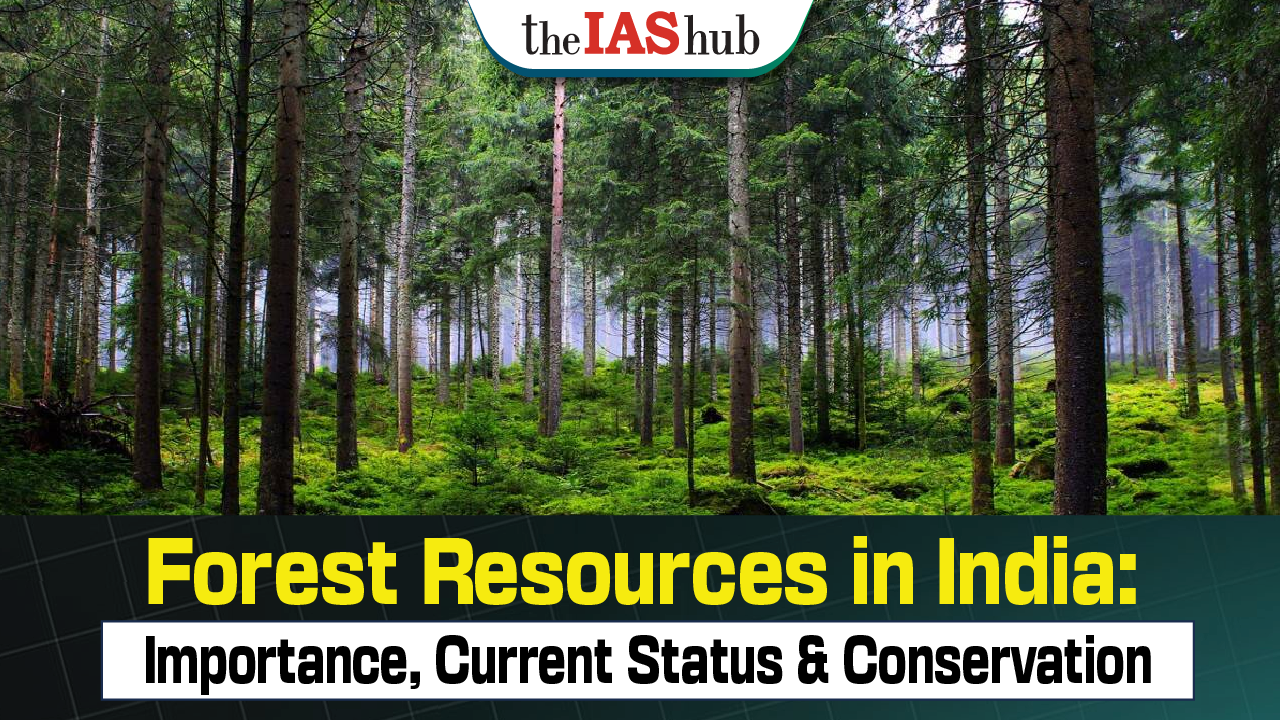Explore the significance of India’s forests, their current cover and carbon stock, and the vital role they play in biodiversity, climate regulation, and supporting livelihoods. Learn about forest conservation efforts and challenges.


Forests are critical to India’s ecology, economy, and climate, covering nearly a quarter of the country’s land. They support biodiversity, indigenous communities, and act as major carbon sinks vital for climate stability.

Status of Forest Resources in IndiaThe total forest and tree cover in the country is 80.9 million hectares, covering 24.62 percent of the country's geographical area. In comparison to 2019, there has been an increase of 2,261 sq km in forest cover, with 1,540 sq km in forest cover and 721 sq km in tree cover.
Odisha, Maharashtra, and Karnataka show the highest mangrove cover increase. The country's total carbon stock is estimated to be 7,204 million tonnes, with an annual increase of 39.7 million tonnes. |
India's forests hold immense ecological, cultural, and economic significance, supporting diverse ecosystems and supporting indigenous tribal communities. They contribute to the rural economy, mitigate climate change, and attract tourists. Therefore, there is a need of collaborative effort from India's government, organizations, and local communities to conserve and sustainably manage forests, ensuring their preservation for future generations.


Refine your answer writing skills and elevate your UPSC preparation with personalized support and expert feedback.
Fill out the form to get started with the program or any other enquiries !








Are you dreaming of becoming an IAS officer? Then, IAShub can be your best guide. It is one of the Best IAS Coaching in Delhi. Many students who want to clear the UPSC exam join IAShub for learning. The institute gives both online and offline classes. Their teachers are experienced and helpful. They easily explain every topic. Students also get notes, tests, and tips to do well in the exam.
IAShub is in Delhi and is trusted by many UPSC students. It offers coaching for every part of the UPSC exam – Prelims, Mains, and Interview. The classes are simple and easy to understand. The teachers are experts and guide students in the right way. IAShub is also known for its helpful notes, test series, and answer-writing practice. IAShub is the best coaching in Delhi and also gives UPSC Online Classes. This helps students from any place in India to learn. The online classes are live and also recorded. So, students can watch them anytime. These classes cover the full UPSC syllabus.
Here are some important services provided by IAShub:
The UPSC Civil Services Exam has three parts:
This exam is tough, but with the right guidance, it becomes easy to manage. Students must study smart and stay regular.
IAShub supports students from the beginning to the end. It gives the right books, tests, and notes. The classes are easy to follow, and the teachers are always ready to help. Students get personal doubt sessions too. The test series and answer checking help students learn where they need to do better. Also, free study materials save time and money.
IAShub also guides students during the final stage – the interview. Experts take mock interviews and give useful tips. This full support makes IAShub one of the best IAS coaching in Delhi.